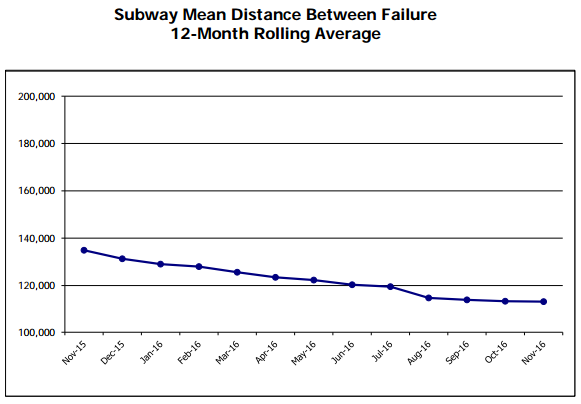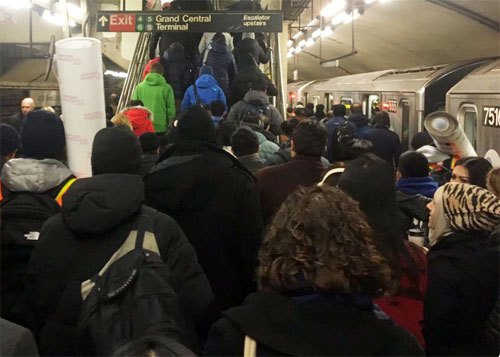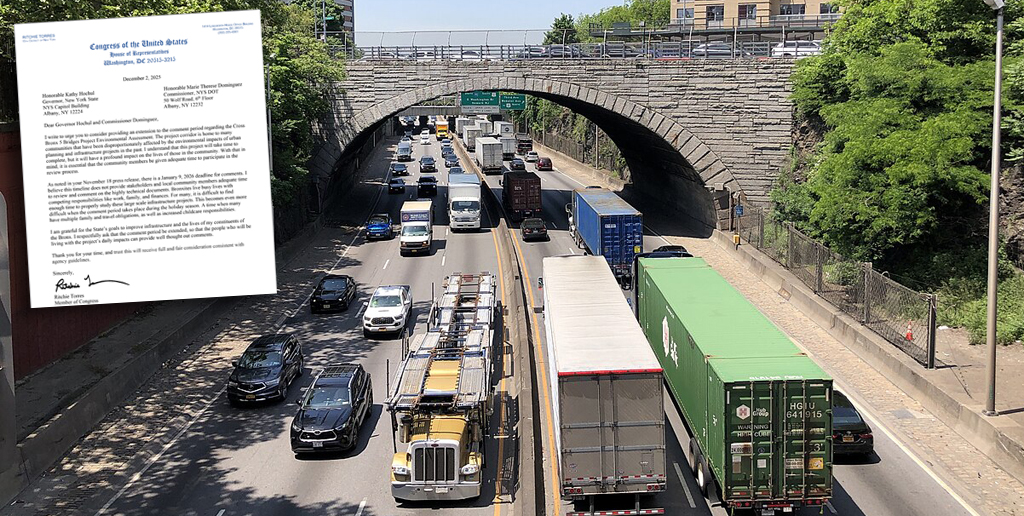If you've been on the subway recently (say, this morning), you probably get the feeling that service is on the decline.
The MTA released performance metrics today that support that conclusion, but the underlying causes of increased delays -- and how the agency plans to address them -- remain unclear [PDF].
One metric trending in the wrong direction is the mean distance between failures, or MDBF, a key benchmark of the subway's reliability. MDBF measures the frequency of delays attributed to train-related mechanical failures, and the 12-month average dropped 16 percent from November 2015 to November 2016.

Is the MTA scaling back on crucial maintenance, or are we seeing fluctuations that should be expected as different classes of subway cars go through their lifecycles?
Unfortunately, the information provided by the MTA about train failures doesn't say very much. We can see how long different classes of train cars go between failures, but not the reasons for those failures -- or what the agency is doing to address them.
"The MDBF decline is unsurprising -- the car breakdown rate systemwide has been on a steady decline for years," Jaqi Cohen of the Straphangers' Campaign told Streetsblog. "But ultimately we need more information from [the MTA] to be able to definitively understand why these failures are happening."
When riders abandoned the subway a generation ago, train breakdowns were much more frequent. The specter of even a partial return to the bad old days of subway maintenance is very alarming.
But there's a lot of uncertainty and room for interpretation in the information that's publicly available from the MTA. While the system's oldest cars are declining rapidly, the impact on service reliability could actually be very small, since those cars are a tiny share of the total fleet.
When cars are new, failures are rare, then there's a period where they come much more frequently before leveling out, which may explain why the 10-year-old R160 cars saw the third-largest change of any car type in the system.
The MTA attributes 2.8 percent of November's subway delays to car equipment failures, but the magnitude of those delays is itself uncertain.
The big concern, as stats show train failures becoming more frequent, is whether the agency is taking appropriate steps to maintain its fleet. In the absence of a more detailed public progress report from the MTA, transit riders are left to assume the worst.






